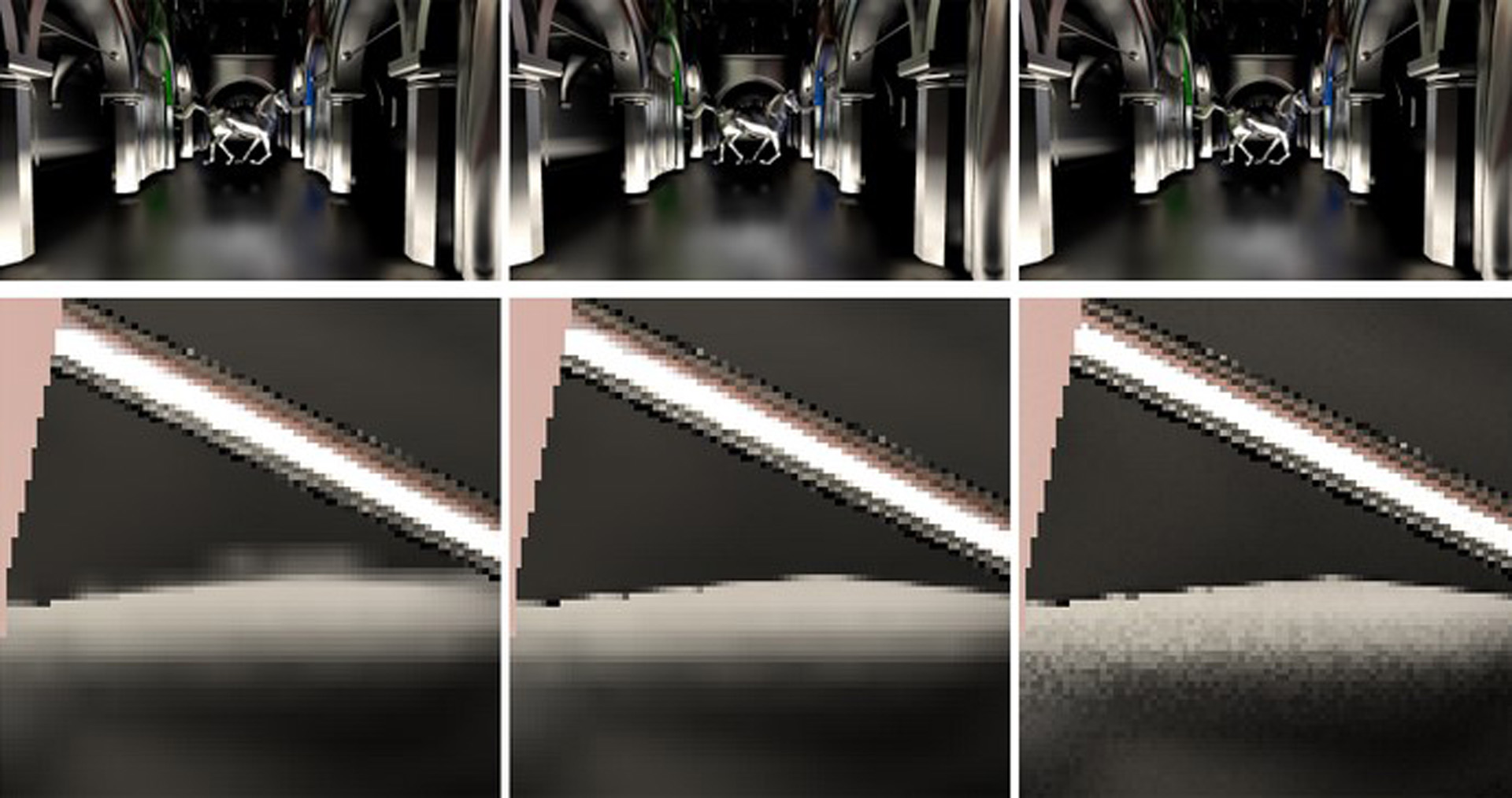“Specular Lobe Aware Upsampling Based on Spherical Gaussians” by Tokuyoshi
Conference:
Type(s):
Entry Number: 95
Title:
- Specular Lobe Aware Upsampling Based on Spherical Gaussians
Presenter(s)/Author(s):
Abstract:
This poster introduces a novel weighting function of bilateral upsampling for specular surfaces. High-resolution rendering with expensive shaders (e.g., global illumination) is a considerable problem for real-time applications such as video games. Therefore, some bilateral upsampling based methods were proposed to alleviate the computational burden. Spatio-temporal upsampling [Herzog et al. 2010] is also proposed to generate more sample pixels than spatial bilateral upsampling by reusing past frames. The main challenge of these upsampling techniques is to optimize a weighting function in order to estimate a pixel value by appropriately prioritizing samples. The weighting function commonly evaluates a similarity of pixel values. For example, a surface normal continuity is generally used for evaluating a geometric similarity, which is well suited for diffuse surfaces because the shading results depend on the normal vectors. However, for specular surfaces, we have to take into account not only the normal vectors but also the eye directions and the specular sharpness to generate accurate results, since specular lobes are determined by them.
References:
1. Crassin, C., Neyret, F., Sainz, M., Green, S., and Eisemann, E. 2011. Interactive indirect illumination using voxel cone tracing. Comput. Graph. Forum 30, 7, 1921–1930.
2. Herzog, R., Eisemann, E., Myszkowski, K., and Seidel, H.-P. 2010. Spatio-temporal upsampling on the gpu. In Proc. of I3D 2010, 91–98.
3. Wang, J., Ren, P., Gong, M., Snyder, J., and Guo, B. 2009. All-frequency rendering of dynamic, spatially-varying reflectance. ACM Trans. Graph. 28, 5, 133:1–133:10.




